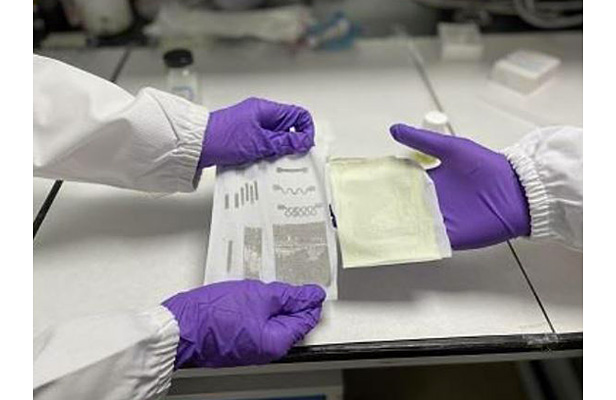A T-Shirt That Charges Phones - New Tech Makes It Possible
Scientists in Singapore developed a stretchable, waterproof fabric that can harness energy created from bodily movement.
Forget the battery packs and electrical plug-ins. This new fabric technology relies solely on the human body to create energy that we can use.
Scientists at Nanyang Technological University in Singapore have developed a stretchable, waterproof smart fabric that can harness mechanical energy created from bodily movement to power small electronic devices like LEDs, mobile devices, medical wearables and therapeutic items.
Throughout the day, as we walk, talk, live and breathe, we’re exerting energy. Now, that energy can be converted into a more usable form through piezoelectricity and the triboelectric effect. This means that energy can be derived anytime the fabric is pressed, squeezed, stretched or bent as a result of bodily activity. It also uses the energy caused by the material’s friction against the skin and other materials.

The fabric-based energy harvesting prototype (right) developed by scientists at NTU contains a stretchable electrode (left) that’s screen printed with an “ink” made of a rubber-like material found in general purpose items like handlebar grips. (photo courtesy of NTU)
The spandex base-layer of the material is made up of a polymer that’s responsible for the energy conversion, and this is then integrated with a rubbery material, making it strong, flexible and waterproof. There’s potential for the material to be woven into T-shirts or placed in the soles of shoes.
Since the material is suitable for athletic and outdoor endeavors due to its waterproof and stretchable properties, this fabric has the potential to be an effective power source. Developers found that tapping on a 3-centimeter-by-4-centimeter piece of fabric generated enough energy to light up 100 LEDs. Now imagine the kind of mechanical energy that could be produced when the fabric is worn by a pro-athlete.
The prototype fabric generated 2.34 watts per-square-meter of electricity, enough to potentially extend battery-life and build self-powered systems. In the past, the major downfall of this technology was its tendency to degrade in function after being washed. However, this material retains electrical output even when washed, folded or crumpled, so it can survive the laundry machine and still provide a stable energy supply for up to five months.
One of its major applications could be in the medical field. This source of energy has the potential to power medical wearables, allowing people to live their day-to-day lives under constant monitoring of health parameters.